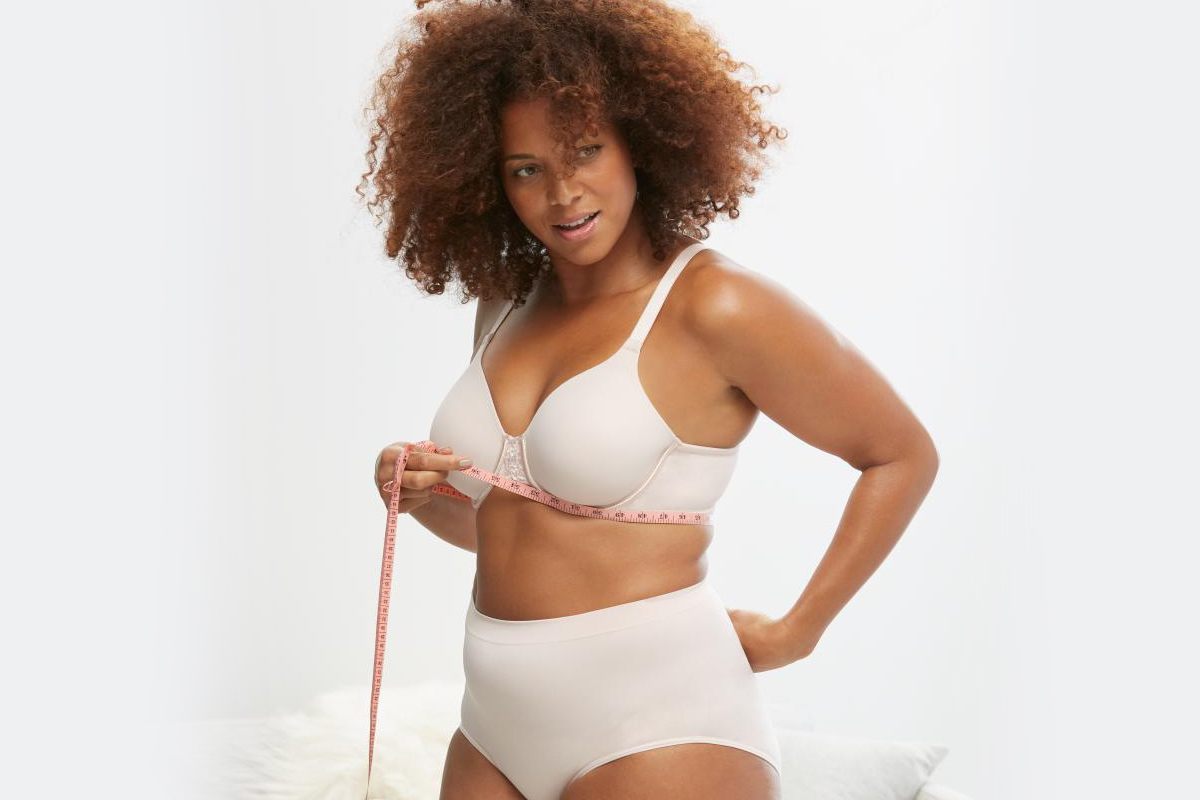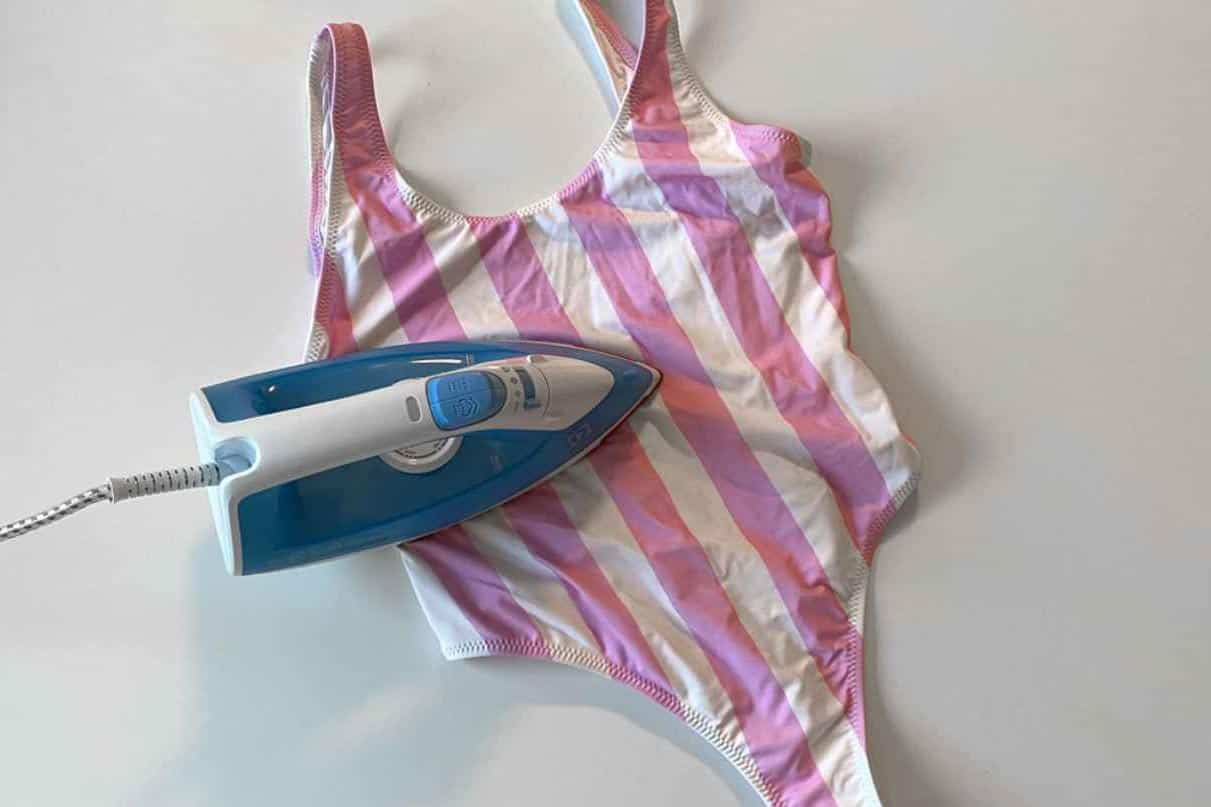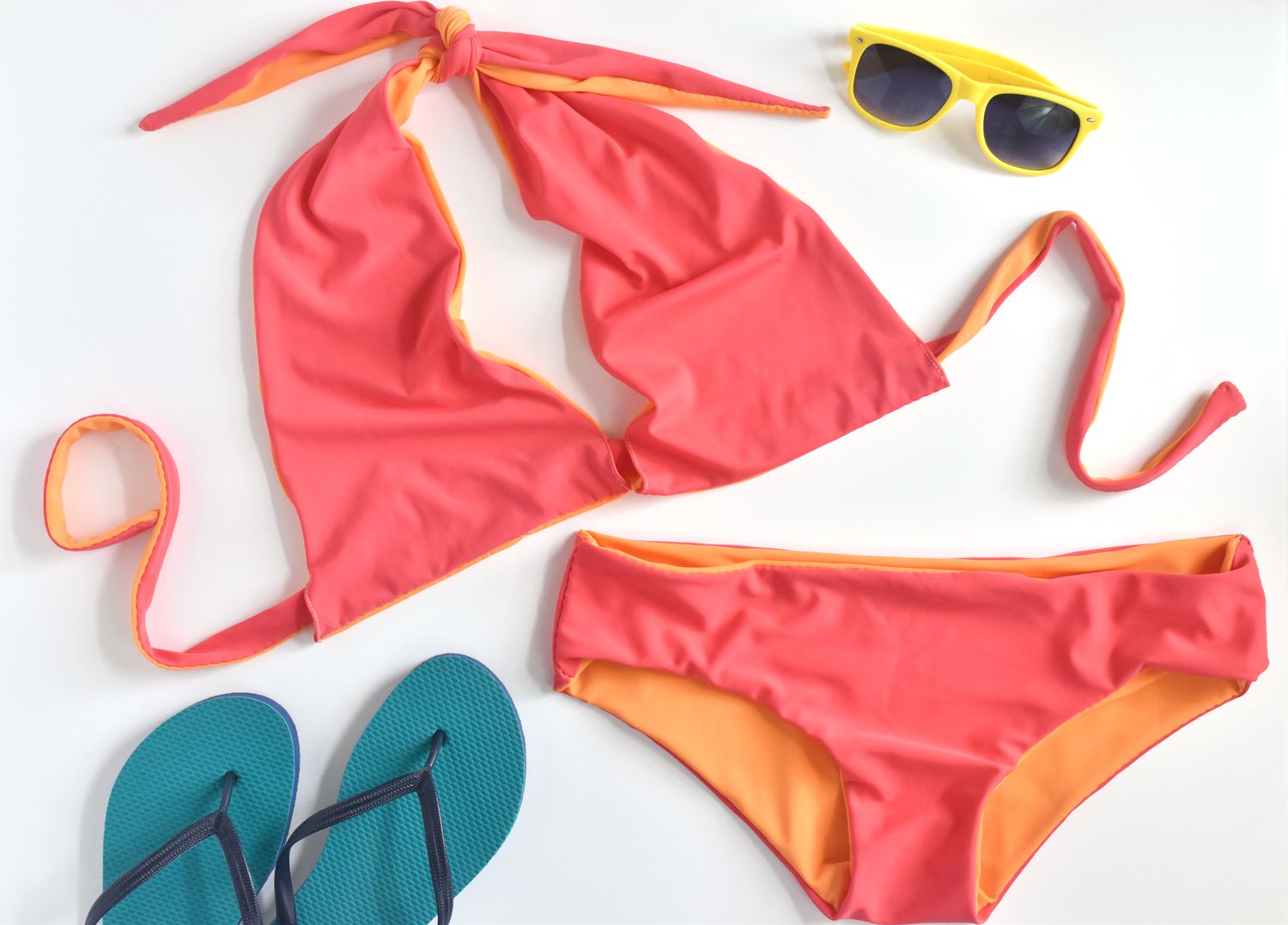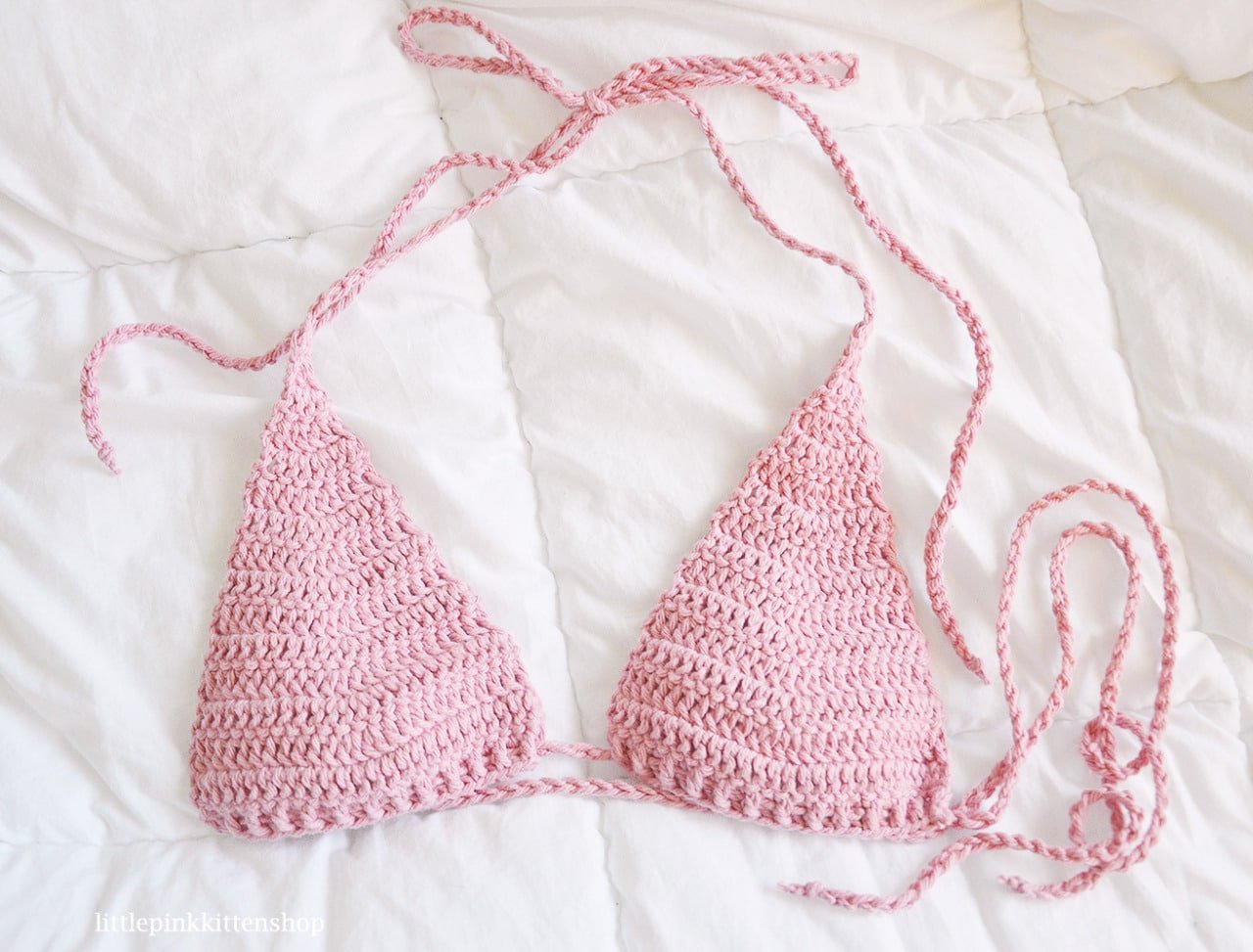Home>How-to Guides>For Women>How To Measure For Swimsuit
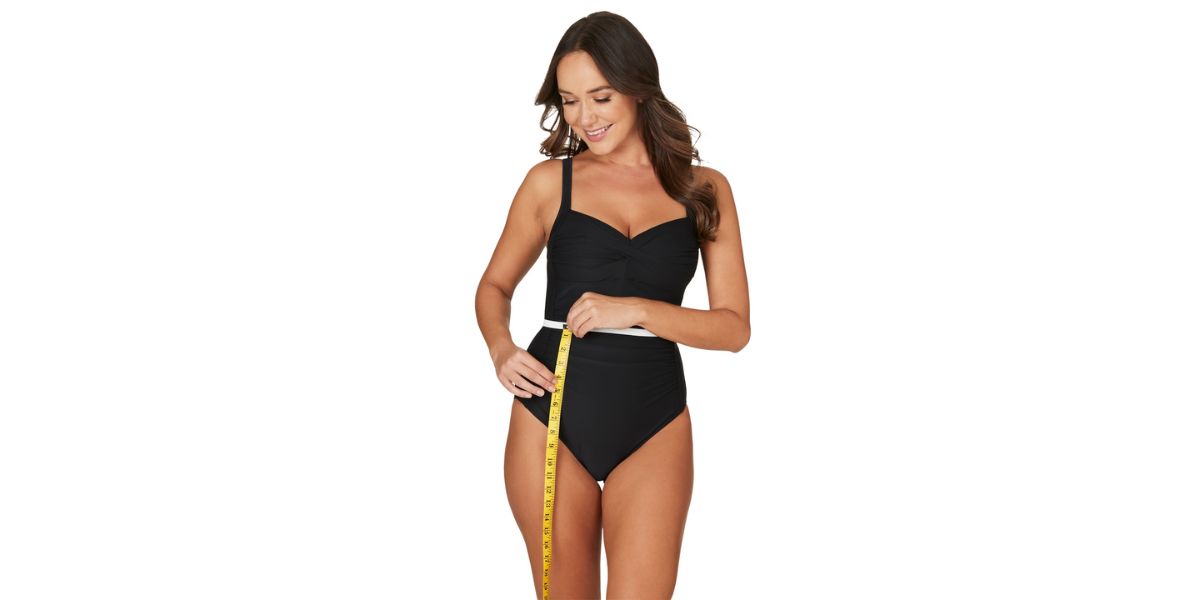

For Women
How To Measure For Swimsuit
Modified: July 30, 2023
Learn how to measure for the perfect swimsuit fit for women. Get accurate measurements and find the ideal swimwear size with our step-by-step guide.
(Many of the links in this article redirect to a specific reviewed product. Your purchase of these products through affiliate links helps to generate commission for Under-tec.com, at no extra cost. Learn more)
Table of Contents
Introduction
Choosing the perfect swimsuit can be a daunting task, but it doesn’t have to be. By understanding how to measure your body correctly, you can find a swimsuit that not only fits you perfectly but makes you feel confident and comfortable as well.
When it comes to buying a swimsuit, it’s essential to know your body measurements to ensure the best fit. This is particularly important for women, as there are various styles, cuts, and sizes available. Whether you’re shopping for a one-piece, a bikini, or a tankini, taking accurate measurements will help you find a swimsuit that flatters your figure and accentuates your best features.
In this article, we’ll guide you through the steps to measure your body correctly and determine your ideal swimsuit size. We’ll cover everything from measuring your bust, waist, and hips to determining your torso length and cup size. Additionally, we’ll provide some helpful fit tips and preferences to consider when finding the right swimsuit for you.
Remember, the key to finding the perfect swimsuit is not just about the size but how it fits and flatters your unique body shape. So, let’s dive in and learn how to measure for a swimsuit that will make you look and feel fabulous!
Step 1: Gather the necessary tools
Before you begin the process of measuring for a swimsuit, it’s important to gather the necessary tools. Having these items on hand will ensure accurate measurements and a smooth measuring process. Here are the tools you’ll need:
- A measuring tape: This is the most important tool for measuring your body accurately. Make sure to use a flexible measuring tape, preferably one designed for measuring bodies.
- A mirror: Having a mirror will allow you to check the tape’s alignment and ensure that you’re measuring the correct areas.
- A notepad and pen: It’s always helpful to jot down your measurements as you go along. This will make it easier to compare sizes when shopping for swimsuits.
- A friend or family member: While not essential, having someone assist you with the measurements can be beneficial. They can help ensure the tape is straight and provide another perspective.
Once you have these tools ready, find a well-lit area with enough space where you can comfortably stand and measure yourself. It’s also advisable to wear minimal clothing, such as underwear or a form-fitting outfit, to ensure accurate measurements.
Now that you have everything you need, let’s move on to the next step: measuring your bust.
Step 2: Measure your bust
Measuring your bust is an important step in finding the right swimsuit size. To accurately measure your bust, follow these steps:
- Wrap the measuring tape around the fullest part of your bust. Ensure that the tape is parallel to the ground and not too tight or too loose.
- Take note of the measurement in inches or centimeters. Round the number to the nearest whole number for simplicity.
It’s important to keep in mind that the bust measurement is not the same as your bra size. Swimsuit sizing may vary, so always refer to the specific brand’s size chart for accurate measurements.
Once you have your bust measurement, you can use it as a reference when shopping for swimsuits. Most brands categorize their sizes based on bust measurements, such as small (32-34 inches), medium (36-38 inches), or large (40-42 inches). However, it’s always wise to check the brand’s specific size chart to determine your exact size.
Now that your bust measurement is complete, let’s move on to the next step: measuring your waist.
Step 3: Measure your waist
Measuring your waist is an essential step in finding the right swimsuit size. To accurately measure your waist, follow these steps:
- Locate your natural waistline. This is the narrowest part of your torso, typically above your belly button and below your ribcage.
- Wrap the measuring tape around your waist, making sure it sits comfortably on your skin and is parallel to the ground. Avoid pulling the tape too tightly or leaving it too loose.
- Take note of the measurement in inches or centimeters. Round the number to the nearest whole number for simplicity.
Knowing your waist measurement is essential when shopping for swimsuits, as it helps determine the correct size and fit. Some brands categorize their sizes based on waist measurements, such as small (26-28 inches), medium (29-31 inches), or large (32-34 inches). However, it’s crucial to consult the specific brand’s size chart before making a purchase.
Keep in mind that the waist measurement alone may not be the sole factor in finding the right swimsuit. Other factors, such as your hip measurement and body shape, should also be considered. Nonetheless, having an accurate waist measurement will guide you in selecting the most suitable options for your preferences and comfort.
Now that you have your waist measurement, let’s continue to the next step: measuring your hips.
Step 4: Measure your hips
Measuring your hips is crucial in finding a swimsuit that fits you well and accentuates your curves. Follow these steps to measure your hips accurately:
- Stand with your feet together and locate the widest part of your hips. This area is typically around the fullest part of your buttocks.
- Wrap the measuring tape around your hips, ensuring that it’s parallel to the ground and snug but not too tight. The tape should be positioned over the fullest part of your hips.
- Take note of the measurement in inches or centimeters. Again, round the number to the nearest whole number for simplicity.
Knowing your hip measurement is crucial when choosing the right size swimsuit. Different brands have varying size charts, often categorized by hip measurements. For example, a small may correspond to hip measurements of 34-36 inches, a medium to 37-39 inches, and a large to 40-42 inches. However, always refer to the specific brand’s size chart to ensure accuracy.
While the hips measurement is essential, it’s essential to consider other factors such as your bust and waist measurements, as well as your body shape, to find a swimsuit that provides a comfortable and flattering fit. By understanding your hip measurement, you can narrow down your options in terms of style and size.
Now that you have your hip measurement, let’s move on to the next step: determining your torso length.
Step 5: Determine your torso length
Determining your torso length is an important step in finding a swimsuit that fits your body proportionately. Follow these steps to measure your torso length accurately:
- Stand up straight with your shoulders relaxed.
- Find the base of your neck, where it meets your shoulders. This is your starting point.
- Place the measuring tape on your starting point and run it down along the front of your body, over your chest, down to the base of your crotch.
- Take note of the measurement in inches or centimeters. Round to the nearest whole number for simplicity.
Knowing your torso length is especially important if you’re considering a one-piece swimsuit or tankini. Swimsuit brands often provide options for different torso lengths, such as regular, long, or short. If you find that your torso length falls outside the standard range, selecting a suit specifically designed for your body shape can greatly improve the fit.
Take into consideration that your torso length, along with other measurements, can help you find a swimsuit that not only fits well but also provides the desired coverage and support. By having an accurate torso length measurement, you can make an informed decision when choosing a swimsuit style that flatters your figure.
Now that you have determined your torso length, let’s move on to the next step: determining your cup size.
Step 6: Determine your cup size
Determining your cup size is crucial for finding a swimsuit that provides adequate support and coverage for your bust. Follow these steps to determine your cup size correctly:
- Wear a non-padded bra that fits you well.
- Stand up straight in front of a mirror and wrap the measuring tape around the fullest part of your bust. Ensure the tape is parallel to the ground and not too tight or too loose.
- Take note of the measurement in inches or centimeters. Round to the nearest whole number for simplicity.
- Subtract your band size (the measurement around your underbust) from your bust measurement. Refer to a bra size conversion chart to determine your cup size based on the difference. For example, a difference of 1 inch corresponds to an A cup, 2 inches to a B cup, and so on.
Understanding your cup size is essential when shopping for swimsuits, as it helps determine the level of support and coverage you may need. Some brands categorize their swimsuit sizes based on both bust and cup measurements, such as 34B, 36C, etc. However, it’s always advisable to consult the specific brand’s size chart to ensure accuracy.
Keep in mind that cup sizes may differ slightly between different brands and styles, so it’s essential to try on different options and choose the one that feels the most comfortable and supportive. Additionally, consider your personal preferences in terms of coverage and how you want your bust to be enhanced or minimized.
Now that you have determined your cup size, let’s move on to the next step: finding the right size for your swimsuit.
Step 7: Find the right size for your swimsuit
Now that you have measured your bust, waist, hips, torso length, and determined your cup size, it’s time to find the right size for your swimsuit. Here are some tips to help you choose the perfect fit:
- Refer to the brand’s size chart: Each swimsuit brand may have its own sizing system, so it’s crucial to refer to their size chart for accurate measurements. Pay attention to your measurements and find the corresponding size for each body part.
- Consider your body shape: Different swimsuit styles may flatter different body shapes. For example, if you have an hourglass figure, a bikini or a one-piece with a defined waist may highlight your curves. If you have a pear-shaped figure, a tankini or high-waisted bottoms can balance out your proportions. Choose a style that enhances your body shape and makes you feel confident.
- Read customer reviews: Customer reviews can provide valuable insights into the sizing and fit of a particular swimsuit. Look for reviews from customers with a similar body shape and measurements to get a better idea of how the swimsuit might fit you.
- Try it on: If possible, try the swimsuit on before making a purchase. This will give you a better sense of how it fits and if it flatters your body shape. Remember that different styles and cuts may fit differently, so don’t hesitate to try on various options.
It’s important to note that swimsuit sizes may vary, and you might find that you need a different size than what you typically wear in clothing. Don’t get discouraged if your swimsuit size differs from your usual size. Prioritize finding a swimsuit that fits comfortably and makes you feel fabulous.
By carefully considering your measurements, consulting the size chart, and taking into account your body shape and preferences, you’ll be well on your way to finding the perfect swimsuit size for a fun and confident summer.
Now that you have found the right swimsuit size, let’s move on to some additional fit tips and preferences to consider.
Step 8: Consider additional fit tips and preferences
While knowing your measurements and finding the right size is crucial, there are additional fit tips and preferences to consider when choosing a swimsuit. These extra factors can further enhance your comfort and confidence. Here are some tips to keep in mind:
- Think about coverage: Consider how much coverage you prefer for your swimsuit. Some options provide more coverage for those who prefer a modest look, while others offer less coverage for those who want to show off more skin. Choose a style that aligns with your comfort level and personal preference.
- Understand cut and style: Different swimsuit cuts and styles can significantly impact how they fit and flatter your body. For example, a high-cut leg can make your legs appear longer, while a halter-neck can provide extra support for a larger bust. Experiment with different cuts and styles to find what works best for you.
- Consider fabric and stretch: The fabric of a swimsuit can affect the fit and feel. Look for materials that are known for their stretch and durability, such as nylon or spandex blends. These fabrics will offer flexibility and comfort both in and out of the water.
- Adjustable features: Some swimsuits come with adjustable features, such as straps or ties. These can allow for a more customizable fit and accommodate different body shapes. Ensure these adjustable features are present if you prefer a more personalized fit.
- Personal taste and style: Ultimately, your personal taste and style should guide your swimsuit selection. Choose colors, patterns, and designs that you love and feel confident in. Don’t be afraid to express your personality through the swimsuit you choose.
Remember, finding the perfect swimsuit is a unique and personal journey. It may take some trial and error to discover the styles, sizes, and features that make you feel comfortable and beautiful. Be patient with yourself and enjoy the process of finding the ideal swimsuit that makes you excited for your next beach or pool day.
By considering these additional fit tips and preferences, you can further personalize your swimsuit choice and feel confident and fabulous whenever you slip into it.
With these steps and tips in mind, you are now equipped to measure for a swimsuit and find the perfect fit. Embrace your body, embrace your style, and enjoy your time in the sun!
Conclusion
Choosing the right swimsuit size is an important aspect of feeling confident and comfortable when enjoying time at the beach or by the pool. By following the steps outlined in this article, you can accurately measure your body and find the perfect fit for your swimsuit.
Remember, it’s essential to gather the necessary tools before measuring, including a measuring tape, mirror, notepad, and pen. Take accurate measurements of your bust, waist, hips, and torso length, and determine your cup size. Use these measurements as a reference when consulting the size chart of the swimsuit brand you’re interested in.
Additionally, consider your body shape, personal preferences, and any specific fit tips when selecting a swimsuit. Think about the coverage and style that make you feel the most confident and comfortable. Pay attention to fabric and stretch, adjustable features, and choose a design that aligns with your taste and personality.
Finding the right swimsuit size may require some trial and error, and it’s important to be patient with yourself during this process. Embrace your unique body shape and style, and trust that you’ll find a swimsuit that makes you look and feel amazing.
With the knowledge and understanding gained from this article, you can now confidently go out and choose a swimsuit that fits your body perfectly. So go ahead and enjoy every moment of your time in the sun, feeling fabulous and comfortable in your beautiful swimsuit!
